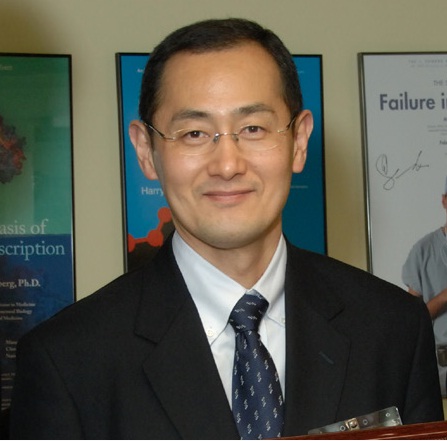Embryonic Stem Cells (ES) are isolated from the blastocyst, an early embryonic stage in mammals. In human
embryonic development, the blastocyst develops five to six days after fertilization. Embryonic stem cells are isolated from the internal cell mass (embryoblast), from which the whole organism develops during natural embryonic development. The blastocysts are destroyed to produce embryonic stem cells. Transferred to a cell culture dish, embryonic stem cells are considered to be pluripotent, so they can form many or almost all cell types of the adult, but not an entire organism.
Fetal stem cells are isolated from older embryos or fetuses (five to nine weeks old) that have miscarried, or they are harvested after termination of pregnancy. These stem cells have a potential that in the transition between embryonic and tissue stem cells. They can no longer differentiate into almost all cells as embryonic stem cells can. However, they still grow faster than tissue stem cells, which are already defined as cell types of a particular tissue.
Tissue stem cells (= adult stem cells) are specific dividable cells in already mature tissues. These adult stem cells serve self-renewal and the development of specialized tissue cell types. Their differentiation potential is limited to the maturation of genetically determined tissues in the environment of which (niches) they are found, for example, in the skin, the liver, the intestine or the hematopoietic system. They are therefore referred to as multipotent, not pluripotent.
Human embryonic stem cells (hES cells) are cultivated from early embryonic cells. For research purposes, embryonic stem cells from surplus, artificially inseminated embryos (in vitro fertilization) are currently being harvested in various countries, for example in Belgium and the United Kingdom. The removal of the hES cells leads to loss of the embryo. The production of hES cells in this manner is considered ethically unacceptable in Germany and is prohibited (Embryo Protection Act). Importing hES cells for research purposes is also generally prohibited but may be allowed under certain conditions. The permits are issued by the Robert Koch-Institute (RKI).
 Picture: Shinya Yamanaka
Picture: Shinya Yamanaka
Source: National Institute of Health/Wikimedia
Induced pluripotent stem cells (iPS cells) are stem cells that are created by artificial reprogramming of human body cells. In 2006, the Japanese scientist Shinya Yamanaka used viruses to introduce the genes Oct4, Sox2, cMyc and Klf4 into mouse body cells for the first time, activating quiescent developmental genes. In this manner, body cells were programed back into an embryonic state, i.e. reprogrammed (Takahashi and Yamanaka, 2006). One year later, the same was achieved in human cells.
Germ cells are cells that form the germ line and are already predetermined for development of the next cell generation in the early embryo. They alter only slightly during embryonic and later development. Only from the primordial germ cells of the gonadal ridge (progenitor cells of egg and sperm cells) can pluripotent stem cells be cultivated under laboratory conditions. In the body, the haploid gametes, i.e. the sperm and oocytes, which form a diploid zygote after fertilization, emerge from them. It is already possible today to artificially produce sperm and oocytes from induced pluripotent stem cells of the mouse and to use them for fertilization. If this also becomes possible in the future with reprogrammed human stem cells, it may be possible to generate a human embryo without the need for natural germ cells. This may be useful to some couples who cannot otherwise have children. However, they raise many new ethical issues that require discussion in society as well as legal regulations.
Mesenchymal stem cells (MSC) are tissue stem cells originating in the mesoderm germ layer. They can be isolated from bone marrow, adipose tissue and umbilical cord tissue. They are also called stromal cells and are very similar to connective tissue cells, the fibroblasts. It has been demonstrated that MSC can differentiate into chondrocytes (cartilage-forming cells), osteoblasts (bone-forming cells) and adipocytes (adipose tissue cells). Differentiation of these cells into muscle cells and heart muscle cells is the subject of controversial debate in scientific circles. The terms adult stem cells (tissue stem cells) and MSC are often used synonymously. However, the MSCs of various tissues represent only one of many types of adult stem cells, because skin stem cells, intestinal stem cells, blood stem cells and the stem cells of all tissues belong to the adult stem cells. MSCs are extremely important in the development of therapeutic approaches using stem cells and are frequently used in clinical studies. In many cases, the effect of the cells is not attributed to differentiation into tissue cells but to the support of endogenous stem cell repair processes. Here, the cells release factors that positively influence regeneration.
Multipotent stem cells (multipotent, from the Latin multus (many) and potentia (capacity, power)) have limited differentiation potential and, in the various tissue types, replace dead cells and aid regeneration following injuries.
Pluripotent stem cells (pluripotent, from the Latin plus (more) and potentia (capacity, power)) can form all cell types of the three germ layers (endoderm, mesoderm and ectoderm) and the germ line by differentiation. However, they cannot form extraembryonic tissue (trophoblast) and thus no viable organism.
Totipotent stem cells (totipotent, from totus (whole) and potentia (capacity, power)) are able to develop a complete autonomous organism through cell division. The cells are only totipotent at a very early embryonic stage from the fertilized egg cell to the 8-cell stage.